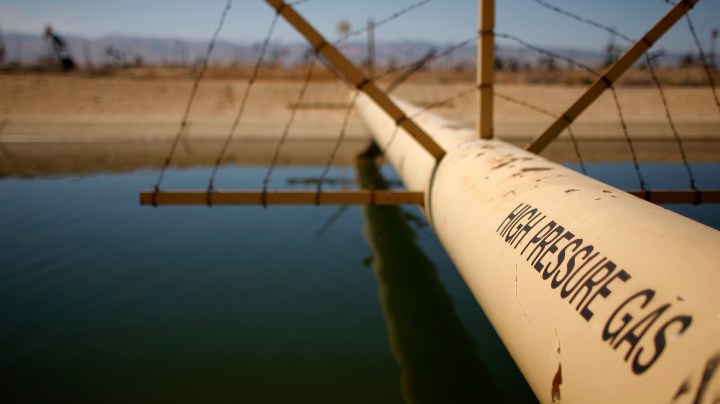
Questions about shale production arise as U.S. oil production falls
Questions about shale production arise as U.S. oil production falls

U.S. monthly crude oil production fell in July by 2.3% compared to June, according to new numbers from the Department of Energy. It comes as analysts and investors are debating whether the American shale oil boom — production based on “fracking” technology — could be losing momentum.
For a decade, fracking technology — shooting pressurized water, sand and chemicals down a wall to break up or fracture shale rock to release the energy inside — has helped boost U.S oil production. In 2018 the United States became the world’s largest producer.
Now there are concerns that shale drilling and fracking could be hitting some limits. One issue is that wells may be spaced too closely together. Tightly spaced wells maximize resources, including labor, water and trucks. But there are concerns they could compete for the same oil underground; one investment bank estimates this “well interference” could limit oil production by 15% to 20%.
Another issue: geography. In some areas, producers have tapped out the energy “sweet spots” by drilling in the most productive areas. Now they’re fracking in less productive areas.
And then there are concerns over drilling investment. The energy sector is the poorest performing part of the S&P 500 index, and investors are demanding that money be returned to investors rather than plowed into oil production.
There’s a lot happening in the world. Through it all, Marketplace is here for you.
You rely on Marketplace to break down the world’s events and tell you how it affects you in a fact-based, approachable way. We rely on your financial support to keep making that possible.
Your donation today powers the independent journalism that you rely on. For just $5/month, you can help sustain Marketplace so we can keep reporting on the things that matter to you.


















